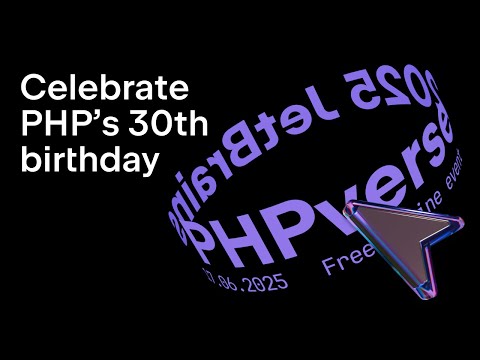Original Post
Before MySpace (2003), Orkut (2004-2014), Facebook (2004), Instagram (2010), and Twitter (2006), the only way to have an online community presence was to host it yourself, or use Geocities (1994-2009).
For messaging there was AOL Instant messenger (1997-2017), ICQ (1996-2010), and MSN messenger (1999-2012), which got later get gobbled up by Skype (2003-2025).
I am sure many of you have set up a PHP BB bulletin board, or one of the many various alternative online forum software packages.
For showing your photos you would use something like a PHP Gallery and host it yourself. These things became a little easier to self host when WordPress got released in 2003.
These tools required hosting your own content, on your own server. That also meant that you had full control over your own content. You could, within the law, publish anything that you wanted, and decide which comments you would allow to be posted under with content.
This content became discoverable through search engines: Yahoo!, Altavista, and later Google. They would only rank the search results through an algorithm that focussed on popularity and content only, using fancy maths.
Alternative content discovery came through Webrings, Blogrolls, and when podcasts became a thing: RSS. RSS wasn't only podcasts though, and many web sites and services would publish new articles and product updates through this protocol. Many, including the BBC, and this site, still do.
Over the years, people shifted away from hosting their own content to the big American tech firms. Facebook for keeping up with your family and friends, "news", and discussion boards for your local cycling group. Twitter for short message communication, and Instagram of sharing your perfect life with the wider world.
As you don't pay for these products, they monetise you, and the interactions you have on these platforms. They are built to create dopamine hits so that you stay longer on these sites, and see more advertising. Instead of seeing the content you to follow, they feed you with information that they think that you will be engaging with. In fact, the content that you would be engaging with, is often created to induce anger.
Some platforms that used to be great at what they did in the past, now have been enshittified to be able to save your more ads, and now also AI slop. You can't honestly say that Google is a great search engine any more for example.
In the open source ecosystem, the proliferation of using "big tech" is also proliferating, with many communities adopting Slack or Discourse as their project's discussions groups.
Using Slack moves content away from the public into a proprietary environment. For example, if you don't pay, you only have access to a certain amount of history. And contributors and users need to have a login to participate, turning them into walled gardens.
And let's not forget about GitHub. A proprietary platform, now owned by Microsoft, is almost universally used by Open Source and closed source projects to host Git repositories. Git ironically being a version control system specifically designed to be decentralised.
GitHub was first for just the code, but now many Open Source projects and companies have given up control over their other project related content as well.
It's not uncommon to see GitHub used as an issue tracker and security report tracker, for project planning, and to test and deploy libraries, tools, and applications through GitHub Actions.
Because this auxiliary content is no longer owned by you or your project, platforms hosting this content can decide to ban or limit your account. This is not just theory, as it happened to OrganicMaps. Although you can easily relocate the code repository, you can not do that for this adjacent content.
PHP is also at risk here, as it uses many of these proprietary GitHub features, and the PHP Foundation uses Slack for its internal communications.
There are also more extreme tales, where Microsoft withdrew access to Office365 for some users. For example, they decided to ban the chief prosecutor of the International Criminal Court (ICC), which ended up impacting several prosecutions due to sanctions imposed by the Trump government.
A few people are still holding out using their own self-hosted forums and issue trackers. This is made harder for them due to regulations, like the onerous Online Safety Act in the UK. This act will likely push more operators to use the big tech variants in the future, as has already happened.
Some countries are luckily starting to realise that depending on US owned big tech is a bad idea.
Luckily, there are still some decentralised communication systems alive and well.
Perhaps the most well known one is e-mail, through the open SMTP protocol. Open protocols are protocols that can be understood and implemented by anyone.
Another example is Internal Relay Chat (IRC), which is perhaps not so flashy as Slack, but still alive — having been build on an open protocol introduced in 1988.
The curious thing about email is, is that it is a decentralised protocol, where everybody can technically set up an SMTP server on their own hardware with their own domain name. But fewer people or companies now do so. Instead, they use big centralised providers, such as Gmail and Outlook. These platforms often require extra requirements for accepting email, on top of what the SMTP protocol stipulates.
As an example, when we moved the php.net e-mail infrastructure to a new server it took Gmail weeks to trust our new IP enough to accept most of our email again on the first delivery attempt.
And can you or your company handle Google cancelling your Gmail account? Not only would you lose access to your email, you will also likely lose access to your Google Drive documents, calender, and potentially logins to many websites as you have used Gmail as login provider.
At this current time, most content is now hosted by third parties at their behest: Journalists and blogs on Medium, Blogger, or other third party platforms; newsletters on Substack; code, issue tracking, security reports, and CI pipelines on GitHub; email on Gmail or Outlook; open source project discussions on Slack; pictures on Instagram; community forums on Facebook; videos on YouTube, and short messages on X/Twitter.
The companies hosting these services can go out of business, decide to not like you any more, or decide to steal your content to train their AI models—and then sell you back the content that you and others created.
Or worse, they can decide to remove or block your accounts, so that you lose your readers, content, project's issues, e-mail, community, images, followers and interactions, and messaging.
The authors, including you, have no control over any of this.
But there is an alternative to many of these services.
Lets focus on the ActivityPub protocol. This open protocol, introduced in 2018 by the World Wide Web Consortium (W3C) can be used as that basis for publishing content, interacting with this content, and integrating this with existing publishing services.
It is the basis of the Fediverse, a network of ActivityPub servers that can communicate with each other, even though there are many different implementations, serving different types of content.
Some implementations focus on short messages, such as Mastodon or Misskey, but others focus on forum-type exchanges (Lemmy, mbin), image sharing (Pixelfed), video sharing (Peertube, Loops), and many many others.
These software packages are written in different languages, and can often be self-hosted. Most of them are open source. And because the protocol is open, you can also create your own implementation, or integrate with already existing software.
Each server that contains content is called an instance. Instances implementing the same service can easily interact, but crucially instances of different services can also do this.
Instances are hosted by individuals, specific-interest groups, language communities, or be "generic" instances. The instances are decentralized, and users can pick the instance of the service they want to use, while still being able to interact with other instances and services.
Users can therefore pick the instance that aligns with their interests, or one where they agree with the community guidelines of that instance. And if they can't find a matching instance and don't want any moderation of what they create, users can set up and self-host their own single-user instance as well.
For example, I am a user of the Mastodon service and use the phpc.social instance. But I also have an account on the Pixelfed service instance pixelfed.social. I can interact with posts on my @derickr@pixelfed.social Pixelfed account with my @derickr@phpc.social Mastodon account. I can reply, like, and forward posts between accounts.
This is very much like e-mail, where users can chose their e-mail provider, and still e-mail users on other servers, although ActivityPub extends this by also being to interact with other services.
The protocol is extensive, and I don't have time to go into every detail, but I am hoping to provide a reasonable overview here.
ActivityPub operates with three main data types: Actors, which represent content owners; Objects, which describe data; and Activities, which represent operations. ActivityPub itself is based on top of ActivityStreams, which defines many different object types, activity types, and standard properties.
An Actor can send data to other Actors by creating an Activity (such as Create) that wraps a data Object, and place it in their Outbox.
The ActivityPub server then takes this Activity and posts it (with HTTP POST) to the Inboxes listed in the Activity's to/bto/cc/bcc fields.
A receiving server then takes the Activity from the Inbox and acts upon this, according to what the Activity represents. The receiving server then sends an Accept (or Reject) Activity to the originating server.
The same would apply to a Follow Activity, where a receiving server (with, or without user interaction) might Accept or Reject the follow request.
Let's have a look at an example.
To create a short message and deliver it to followers, an Actor first creates an Object. Objects have types. For example a Note Object represents a short text, and an Article a multi-paragraph written work of some sort. There are many more types.
Different services will understand different types of objects, although Note Objects are fairly commonly understood.
The data format used with ActivityPub is JSON-LD. An object representing a blog post looks something like:
{ "@context": [ "https://www.w3.org/ns/activitystreams", { "Hashtag": "https://www.w3.org/ns/activitystreams#Hashtag" } ], "id": "https://social.derickrethans.nl/@fridaynightdinners/posts/dakota-jgf.json", "type": "Note", "published": "2025-05-23T18:30:00+01:00", "attributedTo": "https://social.derickrethans.nl/@fridaynightdinners", "content": "Dakota…
", "to": [ "https://www.w3.org/ns/activitystreams#Public" ], "location": { "name": "Dakota, 8 Russell Street, LS1 5RN, Leeds", "type": "Place" }, "tag": [ { "type": "Hashtag", "name": "#FridayNightDinners" } ], "attachment": [ { "type": "Image", "mediaType": "image/jpeg", "url": "https://s3.drck.me/derickrethans-blog-photos.s3.eu-west-2.amazonaws.com/friday-night-dinners/dakota-1.jpg", "name": "Bread with Cheesy Tomato Sauce" } ] }The context describes the namespaces for elements. The default one is listed first (https://www.w3.org/ns/activitystreams) and other namespaces are created in an associative array. The "Hashtag":
"https://www.w3.org/ns/activitystreams#Hashtag" line defines the Hashtag namespace, which is later used to add the #FridayNightDinners tag to the post.
The id contains the unique identifier for this object. The id can be references in later activities, such as Like, Delete, Announce (re-post), Flag (report), etc.
The type defines the object's data type, in this case, Note: a short text.
Actually, in this implementation I slightly misuse the Note type, as I also use it for full articles, which ostensibly should rather be an Article or Page. The reason for this is, is that Mastodon does not support Article or Page objects.
The published property describes the date and time at which the object was published — not necessarily when an Activity is created for it.
The content property contains the Object's content — by default this is HTML encoded as JSON. It is also possible to use other MIME media types through the mediaType property. You can see this used in the sub-object in the attachment.
The to and cc properties are used to instruct a receiving server where to direct the activity to. In this example, it is just sending it to the Public realm, but it is more common to use to it to the followers of this Actor, and cc to the Public realm:
location indicates a physical or logical location that is associated with this object. This property is not always understood by every ActivityPub implementation, for example, Mastodon does not support it.
And then lastly, we have the tag and attachment properties that associate other information with this Object. Tags are prominently used for hashtags, and attachments for linking in additional objects that need special handling, such as this Image object.
In order to deliver this Note to an Actor's followers, the implementation needs to wrap this in an Activity:
The contents of the object property in the case of the Create Activity would be the Object from above, with the to and cc fields copied from that Object. The id is also often similar to the embedded Object's id — in this implementation #Create is added to the end of it.
When a server receives this Create activity in its inbox, it first needs to make sure that the activity is in fact sent by the Actor mentioned in the Activity — you wouldn't want impersonations.
The server can do that, because with the POST request, the sending server also includes cryptographic hashes in its HTTP headers.
For each message that it sends, it:
Creates a
sha256digest of the text representing the JSON payload.Formats a signing key:
(request-target): post {$path}\nhost: {$targetHost}\ndate: {$date}\ndigest: SHA-256={$digest}which includes the URL of the inbox it POSTs to ($path), the host, the current date in the formatD, d M Y H:i:s \G\M\T, as well as the$digestit has just created.Retrieves the private key from the Actor.
Uses this private key to sign the signature.
Encodes this signature in base 64 and formats it again with a different format:
'keyId="' . $keyId . '",algorithm="rsa-sha256",headers="(request-target) host date digest",signature="' . $signature . '"'.And then includes the host, date, payload digest, and this newly formatted signature in the HTTP headers.
This signing algorithm was probably the hardest part of my implementation.
Retrieving the private key from the Actor is achieved by requesting the Actor's JSON object from the actor property (https://social.derickrethans.nl/@fridaynightdinners), which looks like this:
The relevant property to look at for signing is the publicKey property. It includes the key-id (https://social.derickrethans.nl/@fridaynightdinners#main-key), the owner (this Actor), and the public key to use by the receiving server to check the signature that the sending server has created with the secret part of this key.
The public and private key pair are created when an Actor is created.
The Person object also includes the Inbox and Outbox URLs, and URLs for retrieving the followers and which Actors this Actor is following.
The user name (preferredUsername, textual user name (name), description (summary), and some images (icon and image), are also present.
A service can find this Actor JSON document by using Webfinger, a protocol specified by the IETF to allow for the discovery of information about people defined by a URI.
Services that implement Webfinger would request the following URL on the accompanying domain. To find the actor for my blog's ActivityPub presence, a service would GET the following URL:
https://social.derickrethans.nl/.well-known/webfinger?resource=acct:blog@social.derickrethans.nlThis returns the following JSON document:
{ "subject": "acct:blog@social.derickrethans.nl", "links": [ { "rel": "self", "type": "application/activity+json", "href": "https://social.derickrethans.nl/@blog" } ] }The service then uses the href property from this document (https://social.derickrethans.nl/@blog) to retrieve the Actor description.
These four parts is what makes the Fediverse tick.
This is just a quick overview of what goes on technically, but it is perhaps more interesting to see what you can do with it.
I was originally interested in sharing the restaurant reviews that my wife and I write for our Friday Night Dinners website with my Mastodon followers.
For that to work, I had to do a few things.
First I had to create a website (https://social.derickrethans.nl) with routes that would accept Follow Activities to add Actors to send reviews to. Secondly, I had to create a script to send each review (as Note) to these followers.
After a few initial hacks, I settled on implementing library that implements an API that would act on Activities posted to the inbox that an Actor description provided.
Since then, it also accepts GET requests for the Actor, the following and followers collections, the outbox containing all posted Notes, and a route to return the data of each Note itself.
For the inbox, I first implemented the Follow and Undo/Follow Activities to manage followers. I then followed that up with the Like and Undo/Like Activities to store and collect which users had liked each post.
This information is shared with my blogging system, which shows these likes under each article.
The last handler for the inbox that I added is for the Create Activity, so that I can also capture Fediverse replies to each post. This is still fairly primitive as it can't handle replies to replies just yet. But it does allow me to integrate first-level replies to ActivityPub posts with my blogging software through a callback.
The implementation of this is available at https://github.com/derickr/activitypub
After integrating sharing posts through ActivityPub for Friday Night Dinners, I also added an integration with my actual blog, https://derickrethans.nl.
The article on Unicode Collation Sorting can be found as ActivityPub document at https://social.derickrethans.nl/@blog/posts/7ec0d8e4fb538b5b4534bad5e4e13ad6
As there were likes and replies, they now appear under the article as well: https://derickrethans.nl/unicode-collation-sorting.html#likes
My website is not the only ActivityPub integration.
Terrence Eden has created an ActivityPub Server in a single page — he that this is not for production use.
WordPress has a plugin to make all articles available to the Fediverse. 404media also makes their articles available through their Flipboard user https://flipboard.com/@404media.
And if you don't want to create an integration but use already existing software, it is also possible to self-host a Mastodon instance, or use an existing "shared hosting" provider where it costs around £10/month.
Or you can join an instance for your community, such as phpc.social. The benefits from using a larger instance is that you get a moderation team for free. They will action on user reports and apply their own moderation rules. In some cases, they will need to block users, mostly from other instances, or block full instances in case these are violating the community's rules. Blocking other instances is called "de-federation", and this is a decision that instance owners can independently make.
Some instances for example have de-federated with Threads, Meta's short message social media website that is Fediverse enabled. Others have decided not to do so, or not so yet.
Whichever option you pick, you will have full control over your output, but also on what you see. The Fediverse has a strong mantra to also not use algorithms to decide what you can see, or what you see first; nor is it particularly keen on any sort of tracking or non-organic advertising. Unlike big-tech apps _, the apps for the Fediverse have the fewest amount of permissions they can get away with. And even if one of them would request more, you can always select another one.
There is also the opportunity of instances or services to require payments for access to the content. You would only be able to "follow" users when you have an ongoing subscription. Of course, that does rely on instances not sharing these private Notes or Articles with the wider world.
If in the future, a service, or instance, starts injecting ads into the stream of content that you see, you can move your user account to another instance.
As an example, if Meta's Threads service starts publishing ads to random followers, it will certainly get de-federated.
The power of the Fediverse is to give you control over your content. You can publish it through many different channels, and they can all interact.
Just like the web used to be before the algorithms, the advertising, the tracking, and corporations selling your data to shady data-brokers.
Instead of being the product, with ActivityPub and the Fediverse, you're back in control.







